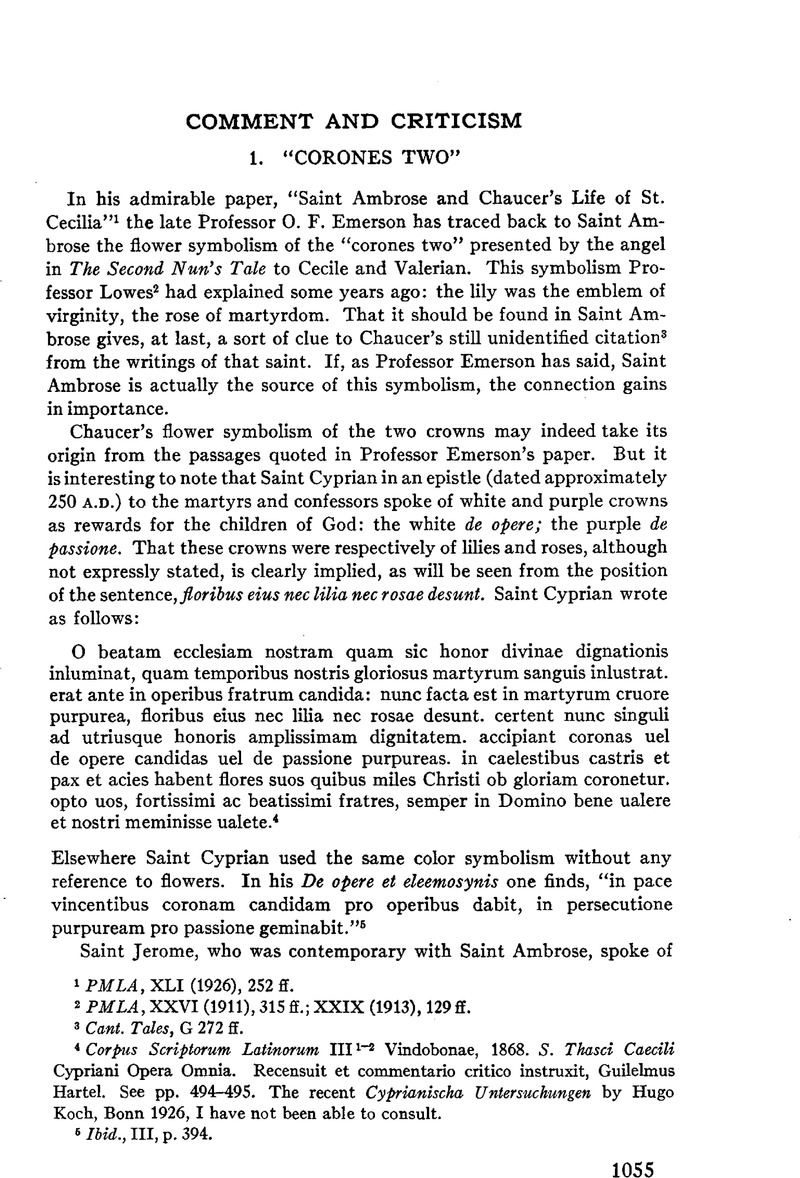No CrossRef data available.
Article contents
Abstract

- Type
- Comment And Criticism
- Information
- Copyright
- Copyright © Modern Language Association of America, 1927
References
1 PMLA, XLI (1926), 252 ff.
2 PMLA, XXVI (1911), 315 ff.; XXIX (1913), 129ff.
3 Cant. Tales, G 272 ff.
4 Corpus Scriptorum Latinorum III1–2 Vindobonae, 1868. S. Thasci Caecili Cypriani Opera Omnia. Recensuit et commentario critico instruit, Guilelmus Hartel. See pp. 494–495. The recent Cyprianischa Untersuchungen by Hugo Koch, Bonn 1926, I have not been able to consult.
5 Ibid., III, p. 394.
6 Corpus. Scriptorum Latinorum LV, Vindobonae, 1912. Sancti Hieronymi Epistulae, Pars II. Recensuit Isidorus Hilberg. See p. 349.
7 Ibid., Vol. LIV, Epistulae …. Pars I, p. 481.
8 “A note on the ‘Corones Two,‘” MLN, XLI (1926), 317–318. The passage referred to is quoted from Tischendorf's Evangelia Apocryphia, p. 65. Pseudo Matthaei Evangelium, Cap. VII.
9 The Apocryphal New Testament…. newly translated by Montague Rhodes James. Oxford, 1924. See p. 71. For other notes on the date of this book, see the Apocryphal Gospels, translated and edited by B. Harris Cowper, sixth edition, London: Introduction, liv. The date here is given as probably not earlier than the fifth century. In Les Évangeles Apocryphiques, Paris, 1911, the translator, Charles Michel says (Introduction, xx–xxi) “Les lettres dénuées de toute valeur historique peuvent au moins servir à fixer approximativement l'époque à laquelle a été composé notre texte. Il ne peut pas être antérieur a la fin du IVe siècle, mais il est probable qu'il est postérieur et qu'on peut le faire descendre jusqu'au VIe siècle, époque a laquelle les préventions des Latins pour les Évangeles apocryphes avaient commencé à se dissiper et où le nom de S. Jerome avait un très grande autorité.


